Are you unsure of what to do for your lawn in the early spring? Knowing what to do with your lawn as spring takes over from winter will help you grow an extraordinarily vibrant and healthy lawn.
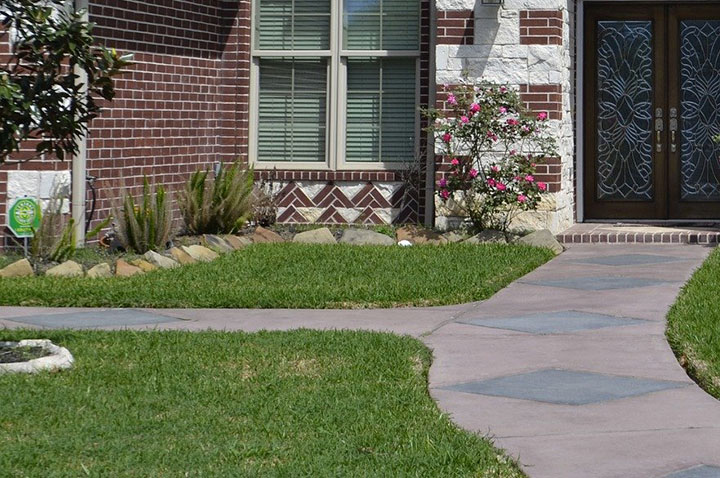
homeandgardeningguide.com assembled the following early spring lawn care tips to help you transition your lawn from winter dormancy to spring growth like a pro.
Spring Lawn Care – Preparing Your Equipment
Your lawn’s appearance depends not only on your efforts but on the effectiveness of your equipment. The following will help you have everything working well when it’s time to spring into action:
Irrigation System Check – Your lawn’s health depends on your ability to compensate for lack of water in times of drought or extreme heat.
Tip: If you utilize hoses to irrigate your lawn, verify that:
1. They have not rotted or become brittle by stretching out the hose and winding it up. Look for cracks or hardened rubber as you wind it back up.
2. They can hold pressure by connecting the hose to a spigot and capping off the other end or kinking the hose. Watch for leaks or punctures as the hose expands under pressure.
3. The threaded connection points at either end are undamaged and form a watertight seal when connected to a spigot or sprayer. You can usually fix a bad seal by replacing the washer in the connector.
4. Your sprinklers, drip-lines, and sprayers are functioning correctly when connected to your hose(s).
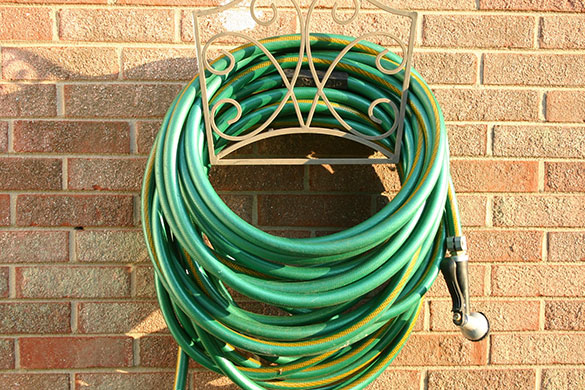
If your hose(s) are damaged, have them repaired or acquire new ones.
Tip: If you utilize an underground sprinkler system, verify that:
1. All sprinkler heads are free of debris and properly activate when turned on. Replace any defective heads.
2. The timer is functioning properly. Run a short test of the timing and cycles it controls, then adjust the timer for each cycle/section of your lawn.
Underground pipes are susceptible to breaking or clogging by soil compaction and opportunistic tree, grass, or weed roots. If you detect low water pressure in the sprinkler heads or water surfacing/pooling on the lawn, this is a sign of a damaged pipe that needs to be repaired or replaced.
Lawnmower Tuneup – Like any other motorized equipment, your lawnmower will need occasional maintenance. Late winter or early spring is the best time to get your lawnmower in shape for the growing season.
Tip: The following are essential to keep your lawnmower performing at its peak:
1. Change the oil and oil filter
2. Replace the spark plug
3. Replace the air filter
4. Sharpen the blade(s)
All mowers work by cutting grass with a blade. If the blade is dull, it will tear the grass instead of slicing it. Torn grass is more vulnerable to disease, infestation, and solar damage.
Watch this video to see how a lawnmower is tuned up.
Hand-Held Equipment – After servicing your lawnmower, it’s time to take a look at your hand-held equipment.
Tip: Keeping your hand-held equipment in excellent working condition will help you avoid accidents and injury. Do this by:
1. Servicing and cleaning motorized or electric edgers and trimmers
2. Inspecting power cords for all electrical equipment and replace damaged cords
3. Cleaning, sterilizing, and sharpening all shovels, spades, and blades on your equipment
4. Replacing equipment with rotting handles or rusted components
5. Reading and following any safety procedures detailed in your owner’s manuals.
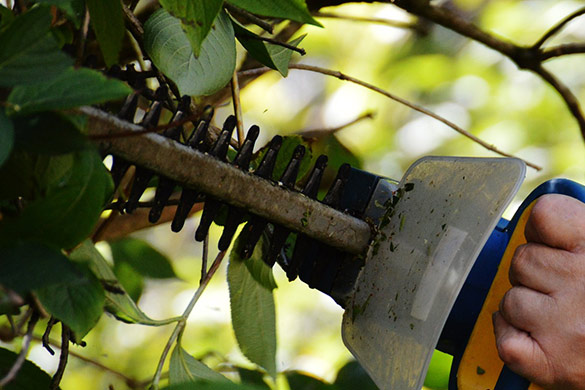
If you sustain an injury from any rusted or new equipment, it is essential to:
• Wash the wound with soap and water
• Apply antibiotic cream or ointment to the wound
• Dress the wound with sterile bandages or bandaids
• Watch for signs of infection like swelling, discharge, increased pain, and increased redness (if these signs are present, see an ER doctor or your primary care physician for evaluation)
If the laceration is deep or you cannot stop the bleeding, go to the ER where the wound can be appropriately treated and explored to verify there is no damage to your underlying musculature.
NOTE: Not every cut from rusty metal results in tetanus. It is when you pick up spores of the bacterium Clostridium tetani in the wound, that you can get infected. These spores are found everywhere in the environment, but particularly in manure fertilized soils, ash, rusty surfaces, human and animal feces, and on the human skin.
Tip: If you haven’t had a tetanus booster shot in the past ten years, consider requesting one as a preventative measure.
Spring Lawn Care – Inspect Your Landscape
Before heading to your lawn with your equipment, you should take the time to inspect the lawn meticulously. This will help you avoid damaging equipment, causing injuries, and wounding other plants, shrubs, and trees. Inspect your lawn for the following:
Surfacing Tree or Shrub Roots – Plant, shrub, and tree roots may surface for many reasons like erosion, improper watering procedures, and soil compaction. These roots must be protected from injury to avoid disease and infestation.
Tip: You can successfully address surface roots by:
• Covering surface roots with soil
• Having them pruned back by a professional
• Applying 3” to 5” of mulch over the roots
• Keep all foot, vehicle, or equipment traffic away from them
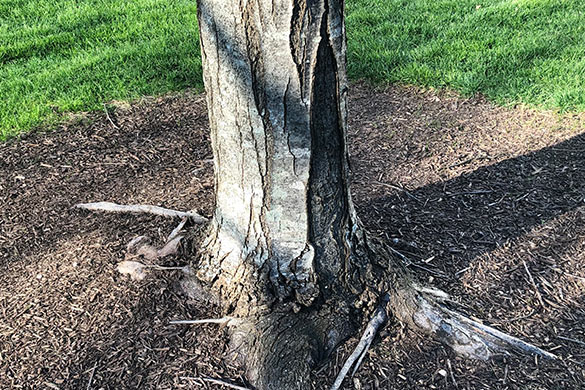
NOTE: As some plant and tree species are prone to produce surface roots, avoid such species when you are designing or modifying your yard or landscape.
Soil Compaction – Soil compaction happens when soil structure is compressed by constant foot traffic, equipment storage, and machinery traffic or parking. Compaction reduces the number and size of pore spaces between soil particles. Compaction typically leads to problems with soil drainage, aeration, nutrient cycling, and plant growth.
Tip: You can reverse or avoid soil compaction by:
• Plug aeration (this is a safe alternative to soil tilling which may damage utility lines and destroy existing turf.)
• Air tilling uses compressed air and a special high-pressure gun to loosen compacted soil.
• Composting may also be used to relieve soil compaction. For fast results, it can be tilled into the top 6” of soil or used as a topdressing to alleviate compaction slowly.
• Installing walkways in high traffic areas can prevent the damages caused by constant foot traffic.
• Preventing vehicle, heavy equipment, and equipment storage on your yard will help slow or stop the compaction of your soil.
NOTE: The most intensive and costly alternative is soil replacement. This alternative may be used when the composition of your current soil constantly compacts (this condition occurs in clay soil frequently.)
Holes or Rodent Burrows – It is sometimes surprising what animals will do to protect themselves from harsh winter weather. Often, they will burrow deep into the ground or nest in the space between mulch and tree trunks.
Tip: Alert animal control if the animal is still present or fill the hole(s) if it has moved on.
Rocks, Small Toys, and Other Debris – Kids, storms, pets, and erosion can all leave small objects on your lawn. If left there when lawn care activities begin, they can become dangerous projectiles when caught in lawn mower blades.
Tip: When inspecting your lawn, use a leaf rake to detect objects that need to be removed.
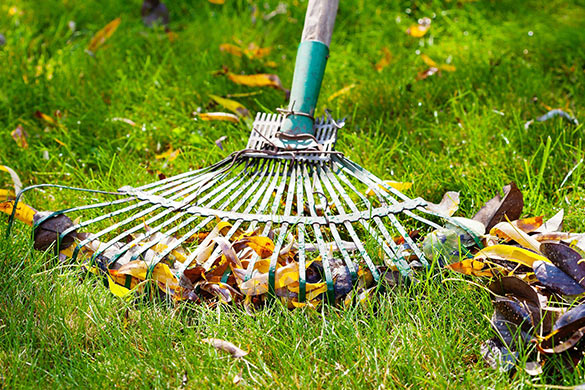
Spring Lawn Care – General Needs
The following activities will aid you in keeping your yard looking pristine throughout the growing season.
Weed Removal – Besides physically removing weeds from your lawn, you can apply pre-emergent herbicides to prevent weeds from growing and post-emergent herbicides to treat weeds that are already growing.
Tip: Do not use herbicides near trees or shrubs. Herbicides can have adverse effects on the growth and development of trees and shrubs. Pull these weeds by hand.
Edging – Edging serves a few significant purposes:
1. Creates a sharp line around the perimeter of your lawn
2. Separates where your lawn ends and a garden bed begins
3. Serves as a border for where your lawn mowing should stop
4. Keeps walkways distinguishable through your yard
Tip: Each time you mow your lawn, walk the edges, and cut back any overgrowth to maintain their distinction.
Overseeding – Overseeding provides an opportunity for new grass to grow and fill in gaps. It is also used to fill in yellowing or balding spots on the lawn.
Tip: Wait to overseed until mid-spring when growing conditions are more conducive to healthy growth.
Tip: For yellowing or balding spots, make sure the cause of the problem is resolved before seeding these areas.
Watering – Many believe it’s time to start regularly watering at the end of the frost season. Regular watering consists of 2 to 3 light pre-dawn waterings per week (4 to 5 in desert or arid climates).
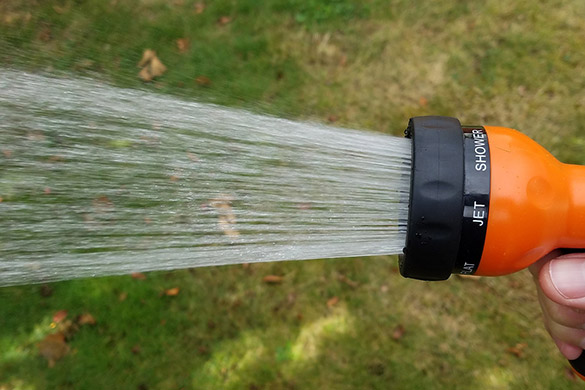
Tip: In early spring, you don’t have to rush. When grass exits dormancy, the roots grow first. If you leave the ground a little dry, the roots will grow deeper into the soil. Deep roots will help your grass better survive drought conditions.
Read more about lawn watering at ipm.ucanr.edu/TOOLS/TURF/MAINTAIN/cycle.html
Fertilizing – There should be no rush to fertilize. For cool-season lawns and warm-season lawns, fertilizing too early means faster growth and more mowing throughout the season.
Tip: Fertilize your warm-season lawn after the third or fourth mowing, and your cool-season lawn only after the grass has exited dormancy.
Mowing – Allow your grass to grow and strengthen until you are well into spring. Mowing too soon can cause undue stress on your lawn.
Tip: When you do begin mowing, remove only one-third of the total grass blade length at a time throughout the growing season. Only at the end of the growing season should the cut be as low as the mower can go.
Early Spring Lawn Care
In this article, you discovered a collection of early spring lawn care tips to help you transition your lawn to the new growing season and avoid many of the mistakes people commonly make.
By beginning your lawn activities in early spring, you can stay ahead of emergent problems like soil compaction, weeds, and burrowing animals.
When you let your lawn grow unchecked, you also allow any problems your lawn is experiencing to go unchecked and potentially cause your lawn to look ugly and unkempt.
Sources:
scotts.com/en-us/library/lawn-care-basics/spring-lawn-care-tips
gardeningsolutions.ifas.ufl.edu/care/tools-and-equipment/lawn-mower-care-and-safety.html
quora.com/How-do-you-treat-a-cut-by-rusty-metal-What-are-steps-to-take-to-prevent-tetanus
edis.ifas.ufl.edu/pdffiles/SS/SS52900.pdf
ipm.ucanr.edu/TOOLS/TURF/RENOVATE/overseed.html
Visit https://www.homeandgardeningguide.com/gardening-landscaping/lawn-care/ for more lawn care resources, and tips.